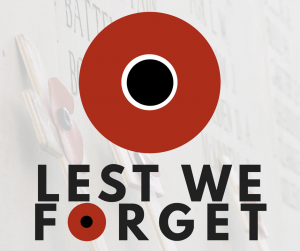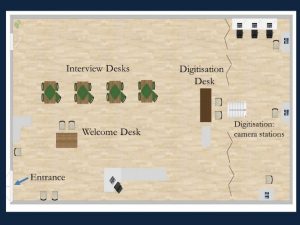 ‘Lest We Forget‘ is a community collection project made possible through a successful crowdfunding campaign run in the summer of 2017. The project was launched in October 2017 and has since then been working with schools and community groups that wish to run public WW1 community collection events, called ‘Digital Collection Days’. This guest post brings together some experiences from the work with two schools: Cheney, a secondary and sixth form school in Oxford, and the independent Our Lady’s Abingdon (senior school).
‘Lest We Forget‘ is a community collection project made possible through a successful crowdfunding campaign run in the summer of 2017. The project was launched in October 2017 and has since then been working with schools and community groups that wish to run public WW1 community collection events, called ‘Digital Collection Days’. This guest post brings together some experiences from the work with two schools: Cheney, a secondary and sixth form school in Oxford, and the independent Our Lady’s Abingdon (senior school).
A school ‘Digital Collection Day’ involves members of the community being invited to bring in their Great War stories, photographs, diaries, and letters to a school, where students and staff document and digitize these vital items so that they can be saved for future generations. The documented stories and objects are then uploaded to a free-to-use Oxford University database, where they will be freely accessible to all members of the public to discover, research, and learn. Taking part in a Digital Collection Day offers students a unique opportunity to interact directly with history, taking part in interviewing, recording, and digitizing important First World War objects and stories.
All you need is:
1. a room
2. a digital camera
3. a computer with internet 4. staff and student volunteers
Organising
One of the key success factors for these two events has been having a couple of motivated teachers in each school as the main organisers. They secured the venues, got the students to volunteer, arranged the training (see below), and also managed and oversaw logistics on the day.
Training
As both of these schools were local to the Oxford-based Lest We Forget team, we were able to offer two sets of training. First, we visited the schools and ran a 45 minute session for the teachers. Essentially, this was a walk-through of the collection day itself (using the slide set at: https://lwf.web.ox.ac.uk/organise-digital-collection-day). We also visited each venue (a school library and theatre, respectively) and talked through the logistics and set-up.
The week before the event, we also ran a 30-45 minute training slot with the student volunteers. We took them through a shortened version of the slide set (also available at: https://lwf.web.ox.ac.uk/organise-digital-collection-day ) and did a walk-through of an WW1 item showing what would happen at the welcome desk, the interview, and the digitisation station respectively.
Venue
In both schools, the Digital Collection Day was held in a large room booked out for this event (the library and the school hall/theatre respectively). The rooms were a good size, quite near an entrance that could be managed, and had space not just for the Collection Day activities but also to host other activities, such as the Frontline Living History exhibition (see below). A Digital Collection Day could also be run in other types of venues, for example a series of smaller rooms, as long as it is possible to smoothly move visitors and objects between different stations: welcome desk and waiting area, interview, and digitisation.
Pre-Event
Leading up to the event, teachers assigned students their tasks/roles during the collection day (welcome desk, interviewing, digitizing, for example). The teachers also organised the advertising for the event. This was started several weeks in advance. Three key things were addressed:
- Notifying the parents of the pupils in the school of the event and seeing if they had any WW1 items that could be brought in to digitise;
- Getting permission from parents for photography of the event;
- Advertising to the local community through local radio, newspapers, posters in libraries, and on social media, etc., telling people to bring items along, time and place, and the purpose of the event. Both schools had elected for the collection day to be open to members of the public and had worked out the logistics in terms of signing in and overseeing members of the public just walking in.
The Event
Both schools decided to run Collection Days that were open to the public in the afternoon (1-4pm) but in the morning had Frontline Living History giving talks to relevant classes/years (see below).
On the Collection Day, the teachers ensured the venue was set up as required with tables, chairs, signage, etc. in place. As both schools were local to Oxford, the Lest We Forget team provided and set up the digitization area, complete with cameras, lights, and scanner. Before the event, teachers had divided students into their assigned groups: 2 for the welcome desk and as many as available to look after teh visitors and make sure they knew where to go and when, 4 or 5 pairs of students for the interviewing desks —this allowed one student to ask the questions, while the other made notes about what was being said—and 3-4 pairs of students for digitization. Where there were more student volunteers, students worked in shifts or took on additional duties, like guiding visitors around the event. The older sixth form students were on hand near each station, ready to provide additional help if things got busy. Throughout the event, teachers generally oversaw the main areas, ready to answers any questions. They also monitored the timely flow of the event, ensuring that people who had brought in objects where not waiting long at each stage.
Frontline Living History
Frontline Living History offers workshops, taks and artefact handling sessions related to WW1. Both schools decided to combine their Collection Day with talks and demonstrations by Frontline. who held workshops around battlefield medicine and other topics, complete with a variety of related WW1 objects and replicas for students to handle and/or try on. The talks, and the opportunity to view and handle a variety of WW1 objects, were much appreciated by both students and teachers. During the event, Frontline then set up a large table for members of the public (and students) to view a diverse collection of WW1 material; they also advised on the material brought in by the public and demonstrated equipment and kit used in the war.
Student Feedback
Students, teachers and visitors all expressed their satisfaction with teh events. Here is a sub-set of the feedback obtained from the students:
What was the most interesting artefact you encountered on the day?
- A man’s father’s cigarette box stopped a bullet and saved him
- A cross (grave marker) which had been brought over from France
- I found the story of a man who had kept a huge archive of his father very interesting. He kept every photo, postcard, letter and diary for 100 years. This was so interesting because he had so much that was still in good condition
What did you most enjoy about taking part in the event?
- I enjoyed talking to people and finding out their stories
- I enjoyed helping in the school community and hearing the amazing stories
- I enjoyed hearing the types of family stories that I have never heard before. It was interesting hearing different sides of the war.
- Doing the digitisation
More Information
‘Lest We Forget‘ is a nationwide initiative, led by the University of Oxford, which aims to recognise and record those stories, objects and memories from World War One which survive – not in museum collections or history books – but in the hearts and homes of the very many families and individuals affected. The project can provide practical support to local communities interested in running their own Digital Collection Days. Individuals can also upload material directly via the project’s online platform.
If you would like to know more about holding a Digital Collection Day in a school or other local community, please visit https://lwf.web.ox.ac.uk or contact the project at ww1collections@it.ox.ac.uk.
